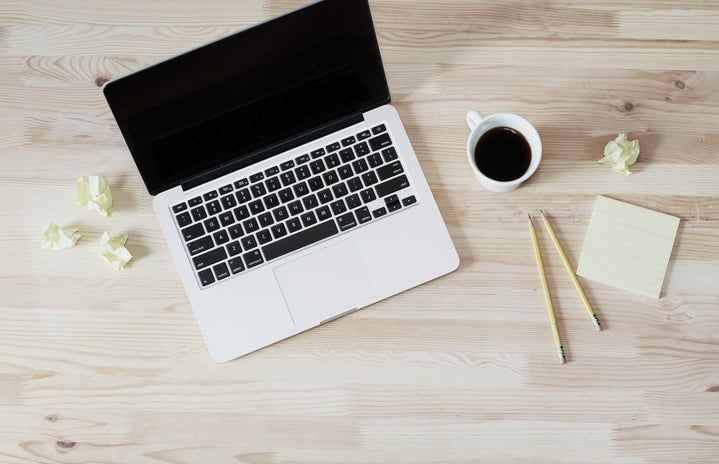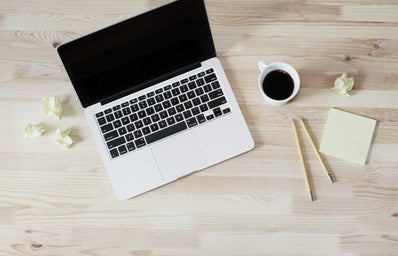When I was in high school, I would dread writing emails to my teachers. Even if I was just asking a regular question, my hands would become clammy as my fingers would nervously tap across the keyboard. I would often recruit my mom to read over what I had written before sending the email off into the intangible interweb. After a few years in college, I (mostly) got over my fear of writing formal emails. And when I began my summer internship, I felt equipped to tackle this new world of *work* emails. I understood it would be in a different context, but I felt that I had the background to not sound like a complete Outlook-amateur. Turns out, I was wrong.
Besides the obvious obstacle of understanding the very basics of my work email program (I am a Gmail girl through and through), the nervousness I once felt in high school returned as I sent emails to the head of the PR department. I feared typos, informal greetings, and forgetting to add all necessary addresses to an email chain.
The truth is, writing work emails is a skill, but one you can learn. What follows are some tips and tricks I learned over the course of my internship that I believe will boost your confidence when you write your next formal email or message.
- Always begin and end the email with a greeting, but make sure it’s the right one.
-
The first question you will encounter will be whether to write “Dear” or “Hello.” If you are emailing a work colleague for the first time, you should address them as “Hi/Hello Firstname/Ms./Mrs./Mr. Last Name” depending on your industry.
Once you establish a relationship with the person, you can change the greeting to something more casual. It’s better to be more formal than not, just out of caution, but trust your instinct. You can also look at how they sign off their emails. Ashley Drummey, a junior at Connecticut College, explains, “You can learn a lot by paying attention to how others structure their emails and even model yours after theirs.”
The question then becomes: How do you end the email? If it’s your first time reaching out to an employee of higher status, I would recommend using the trusty “Sincerely.” However, other good contenders are “All the best,” “Best,” or “Thank you.” Again, as you build a more personal relationship with the person, you can become more informal with how you end and begin your message.
Makena Gera, a junior at Marist College, always ends her emails by saying “Let me know if there is anything else you need from me.” She thinks that colleagues and supervisors really appreciate that because it shows that you care and you’re willing to do more if needed.
- Make sure to hit all of your points in a clear and concise manner.
-
You don’t need a full thesis statement in your email, but it’s still important to communicate the purpose of your email in a clear and concise way. If you are responding to an email, double check to make sure you have answered any questions posed in the original message and have communicated your responses clearly. Now is not the time to be lyrical, but rather remember who your audience is and maintain formality. Whether you are writing an email or your LinkedIn bio, it’s important to be aware of the content and your tone. However, that does not mean you can’t make your emails a bit more personal! It all depends on the context of the situation. For example, if you are sending a networking email, then you can add in some unique details that would set you apart from the applicant pool.
Related: How to Write a Networking Email That Works
- Read that mesage and check it twice.
-
Even a short message to your boss still deserves attention. It is vital that you look over the copy once, if not twice.
If you’re struggling, another tip is to read the message aloud, as this is often a more helpful way to hear any mistakes and make sure each sentence is clear and easy to follow. Gera also advises to write the email first and then walk away from it for 15 minutes, and then go back and read it again with fresh eyes before you send it.
I spoke with Andrew Hindes, the person behind The In-House Writer, about the importance of editing your email multiple times. He explains that it is vital that there is no room for ambiguity. Even if you feel like you are spending way too much time on a five line email, it is better to stay in the direction of a type-A perfectionist.
- Tone is super important in a work message.
-
I know I have outlined the importance of maintaining a formal tone in your work-related emails, but that doesn’t mean you can’t throw in an exclamation mark here and there. I believe that one exclamation mark, when appropriate, can add flair to your email, especially in the greeting. It shows excitement and passion, or your interest in a position.
It may be best to wait until the person you are emailing uses an informal tone, but I found during my internship that my colleagues would add more punctuation for quick, on-the-dash emails sent to each other throughout the day. An exclamation mark keeps the morale up in the office. However, this doesn’t mean that ten exclamation marks in a row or emojis are appropriate in a work email—always remember who your audience is and what tone you are using.
“The way you write work emails to your supervisors or even your colleagues depends on the atmosphere and culture of the company,” Gera notes. It is smart to feel the pulse of where you are working before sending out that first email and always fall back on a more formal email before you release a strand of smiley faces.
- Regarding subject lines, email signatures, and chain emails.
-
Like the body of your email, the subject line should relate to what you are about to say, and it should also be as clear and concise as possible. Try not to put an entire sentence into the subject line, but rather pull out important keywords from your email to create a legible phrase. For example, you could write: “Agenda for 2 P.M. Meeting,” instead of “This email contains the workflow for today’s afternoon meeting with marketing.”
Beyond the subject line, there are so many fun additions you can make to emails that are still professional. My favorite is your email signature. If you don’t have one already, I suggest that you go into the settings of your email account and follow instructions about how to add an email signature which will appear at the bottom of every email you send. In my signature, I include my name, pronouns, school and graduation year, email, and the most important leadership position or job I currently hold. This may seem ambitious, but it is a great way to exude professionalism in the workplace and share quick things about yourself, such as your most recent or impressive position, to new contacts. You never know, your email signature may be how you get your next job!
Hindes also discussed the etiquette of copying people on an email, and that it is crucial that you be aware of how many recipients really should be on the email chain. For example, if you are replying to a group email, but only want to inform your boss that you will be able to make the Friday meeting, it is not necessary to include all contacts in this response. When drafting a group email, you can get even more fancy and carbon copy (Cc) addresses (which means those receiving the email will see all emails included) and blind carbon copy (Bcc) addresses (which means that these emails will not be seen). This makes things more complicated, but Bcc comes in handy when you want colleagues to know of your plans to host a meeting in the conference room so they know the space will be in use, but they don’t necessarily need to be present at the meeting.
Related: How to Rebrand Your LinkedIn & Make It Useful
Despite these rules, it’s important to remember that we all make horrific email-related mistakes that haunt our dreams at night. Writing emails is a skill, but one worth learning.


